-
 +15 +1
+15 +1NASA Releases Ridiculously Sharp Webb Space Telescope Images
The telescope achieved a "perfect" alignment, according to Webb scientists.
-
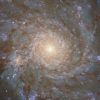 +14 +1
+14 +1Hubble telescope spies striking spiral galaxy that's part of a huge cosmic structure
The Hubble Space Telescope caught a galaxy on camera that underlies a much larger structure, known as the Virgo Cluster. The image of spiral galaxy NGC 4571, approximately 60 million light-years from Earth, is part of a partnership between Hubble and other telescopes to provide more information about huge collections of stars.
-
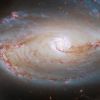 +20 +1
+20 +1Hubble Space Telescope spots eerie galaxy 'eye' staring across the universe
A new Hubble Space Telescope clearly captures the heart of a distant galaxy structured much like our own. The new image shows the "eye" of a galaxy called NGC 1097, which is located 48 million light-years away from Earth. NGC 1097 is a barred spiral galaxy, which puts it in the same category as the Milky Way.
-
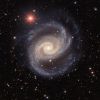 +16 +1
+16 +1Stunning image shows galactic dance of stars swirling around a supermassive black hole
Young stars surround a supermassive black hole in a stunning new image captured by an instrument designed to search for dark energy. The image shows a face-on view of the galaxy NGC 1566, which is nicknamed the Spanish Dancer for its dramatic swirling shape. The photograph comes from an instrument called the Dark Energy Camera, which is based at Cerro Tololo Inter-American Observatory in Chile.
-
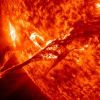 +13 +1
+13 +1NASA captures violent flash from sun's mini eruption
On Thursday, our sun released its pent-up energy in the form of a little magnetic bomb. It's called a solar flare, and NASA caught the whole thing on camera. Solar flares, which are sudden explosions on the sun's surface caused by strong magnetic forces, are of concern to astronomers because these events can impact electrical power grids on Earth, causing regional blackouts. They also risk interference with radio communications.
-
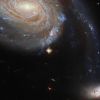 +8 +1
+8 +1Hubble telescope spots a pair of 'squabbling' galaxies locked in cosmic dance
The Hubble Space Telescope caught a pair of "squabbling" galaxies in action, according to the European Space Agency. The pair of objects is known as Arp 86 and includes two galaxies roughly 220 million light-years away from Earth in the constellation Pegasus. They are known individually as NGC 7753 and the much smaller companion NGC 7752.
-
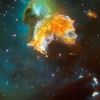 +17 +1
+17 +1Stunning supernova remnant looks like Pac-Man gulping down stars
That is not a joyous Pac-Man munching its way across the cosmos. Even so, this remnant of a stellar explosion looks an awful lot like the iconic video game gobbler in a newly released NASA image captured by the Hubble Space Telescope.
-
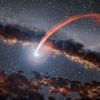 +20 +1
+20 +1This is What it Looks Like When a Black Hole Snacks on a Star
Analyzing observations of an X-ray flare and fitting the data with theoretical models, UArizona astronomers documented a fatal encounter between an unlucky star and an intermediate-mass black hole.
-
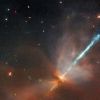 +11 +1
+11 +1Nasa shares photo of sceptre-like object in space captured by Hubble telescope
The photo captured by Hubble telescope is that of Herbig-Haro object - considered to be star groups at the very beginning of life. The first documented case of Herbig-Haro object was recorded in late 19th century by American astronomer Sherburne Wesley Burnham.
-
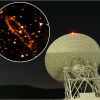 +15 +1
+15 +1Scientists capture most-detailed radio image of Andromeda galaxy to date
Scientists have published a new, detailed radio image of the Andromeda galaxy – the Milky Way’s sister galaxy – which will allow them to identify and study the regions of Andromeda where new stars are born.
-
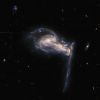 +3 +1
+3 +1Squabbling Galactic Siblings
A dramatic triplet of galaxies takes centre stage in this latest Picture of the Week from the NASA/ESA Hubble Space Telescope, which captures a three-way gravitational tug-of-war between interacting galaxies. This system —known as Arp 195— is featured in the Atlas of Peculiar Galaxies, a list which showcases some of the weirder and more wonderful galaxies in the universe.
-
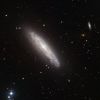 +3 +1
+3 +1A rare glimpse of a star before it went supernova defies expectations
A rare glimpse of a star before it exploded in a fiery supernova looks nothing like astronomers expected, a new study suggests. Images from the Hubble Space Telescope reveal that a relatively cool, puffy star ended its life in a hydrogen-free supernova. Until now, supernovas without hydrogen were thought to originate only from extremely hot, compact stars.
-
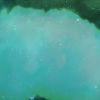 +2 +1
+2 +1Could Dark Matter Stars Exist?
Most of the universe is made up of dark matter, so could it form into stars and galaxies like regular matter? #space #darkmatter #galaxies #stars
-
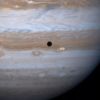 +10 +1
+10 +1A rare conjunction of Jupiter and Saturn will be visible to the naked eye for the first time in 800 years
Jupiter and Saturn are due to converge in their orbits on Monday, appearing as a double planet in the night sky — the first such occurrence in almost 800 years. The two planets have been near one another throughout the year, according to Rice University astronomer Patrick Hartigan. They will reach their closest approach, passing within 0.1 degrees of each other during the winter solstice on December 21, the longest night of the year.
-
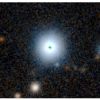 +30 +1
+30 +1Sun-Like Star Identified As the Potential Source of the Wow! Signal
The Big Ear Radio Telescope in Delaware, Ohio, was disassembled in 1998 having operated for over 30 years. It was replaced by a golf course. Big Ear was never the world’s biggest radio telescope, nor its most sensitive. But Big Ear nevertheless made one of the most famous observations in the history of astronomy, one that till this day has never been explained.
-
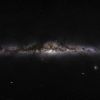 +13 +1
+13 +1The Milky Way panorama
This magnificent 360-degree panoramic image, covering the entire southern and northern celestial sphere, reveals the cosmic landscape that surrounds our tiny blue planet. This gorgeous starscape serves as the first of three extremely high-resolution images featured in the GigaGalaxy Zoom project, launched by ESO within the framework of the International Year of Astronomy 2009 (IYA2009).
-
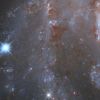 +14 +1
+14 +1The Hubble Telescope caught a supernova outshining every star in its galaxy
The Hubble Space Telescope got a rare look at one of the most awesome light shows in the universe, catching a supernova that outshone every star in its galaxy.
-
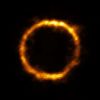 +14 +1
+14 +1Why is there a normal galaxy sitting at the edge of the Universe?
Aided by a trick of gravity, astronomers have found a normal galaxy. Big deal, right? The thing is, where they found it is not normal: The light we see from it left the galaxy 12.4 billion years ago, meaning we’re seeing it as it was when the Universe itself was only 1.4 billion years old! That’s what makes this so weird. A normal galaxy has no business being there when the cosmos was so young. But yet, there it sits.
-
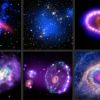 +25 +1
+25 +1Nasa releases stunning images of cosmic world
National Aeronautics and Space Administration (Nasa) has released some stunning and phenomenal images of the universe — galaxies, supernova remnants, stars, planetary nebulas processed by its ‘Chandra X-Ray Observatory’ — the world’s most powerful x-ray telescope.
-
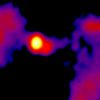 +20 +1
+20 +1NASA finds active galaxy far, far away that looks like a "Star Wars" TIE fighter
Scientists have spotted an active galaxy far, far away — and it looks like it could join Darth Vader's fleet. Located 500 million light-years away in the Cassiopeia constellation, Galaxy TXS 0128+554 bears a striking resemblance to the iconic aircraft from Star Wars. According to a paper published Tuesday in The Astrophysical Journal, the galaxy is active, meaning all of its stars are not capable of providing the amount of light emitted by the galaxy on their own.
Submit a link
Start a discussion




















